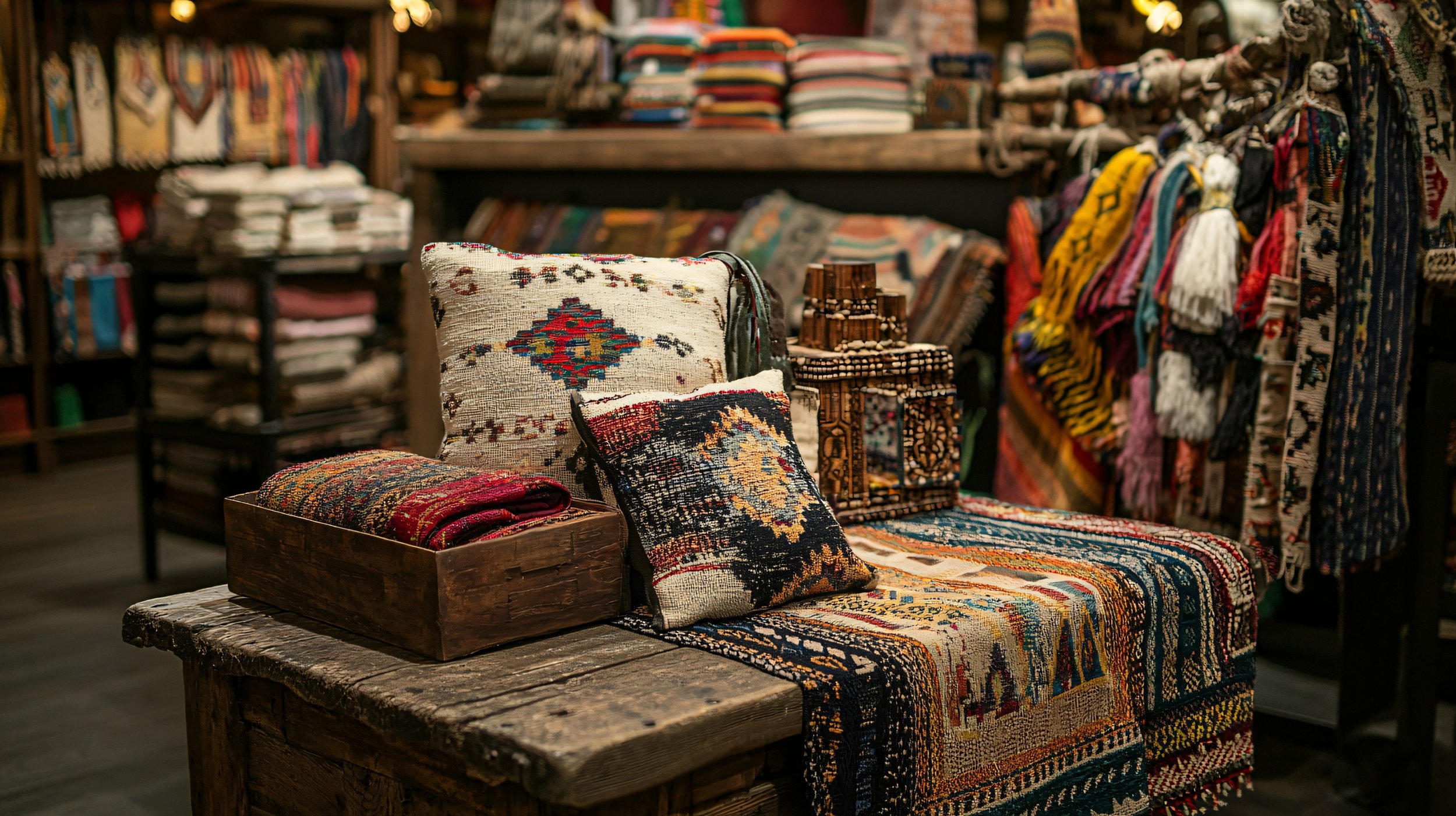Honoring Heritage Through Design
Creating Meaningful Spaces in February
February is a time to reflect on what matters most—love, connection, and the legacies that shape who we are. While the month brings iconic celebrations like Valentine’s Day and Black History Month, it also invites us to look inward, exploring our personal and cultural heritage. What better way to honor these themes than by making your home a canvas for your story?
Your home is more than a space to live—it’s where memories are made, traditions are celebrated, and values are reflected. By thoughtfully incorporating elements of family and cultural heritage into your design, you can create an environment that feels uniquely yours while preserving what’s most meaningful.
Whether you’re displaying treasured heirlooms, reimagining traditional patterns, or carving out spaces for rituals and connection, every design choice can be a way to honor the past while creating room for the future.
Start with the Stories
Every family has a narrative—woven with shared experiences, cultural roots, and personal milestones. Before diving into design decisions, take the time to uncover and embrace the stories that define your heritage.
Engage with Family: Speak to older relatives about their experiences, values, and memories. What objects or traditions did they cherish most? These conversations can inspire design choices that feel personal and grounded.
Document Your History: Create a visual timeline using old photos, letters, or even objects like passports and postcards. Frame and arrange these items in a way that tells a cohesive story.
Incorporate Symbolism: Look for recurring themes or symbols in your family’s culture or history, such as motifs, colors, or objects, and use them as inspiration for your decor.
When you start with these stories, your design becomes more than just aesthetic—it becomes a reflection of who you are.
Incorporate Heirlooms in Thoughtful and Functional Ways
Heirlooms connect us to the people and moments that have shaped our lives. Instead of letting these items collect dust in storage, bring them into the rhythm of your daily life by turning them into usable or prominently displayed pieces.
Everyday Elegance: Don’t reserve heirloom china, silverware, or glassware for special occasions. Use them for regular meals to infuse your daily life with a sense of history and connection. This practice not only honors the past but makes every meal feel like a celebration.
Modern Applications: Reimagine heirlooms for new purposes. A vintage trunk can become a coffee table, an antique mirror can anchor a modern gallery wall, or embroidered linens can be transformed into throw pillow covers.
Create a Legacy Piece: Combine multiple heirlooms into one cohesive item. For example, patchwork a quilt from family textiles or frame a collection of handwritten recipes into kitchen artwork.
When heirlooms are part of your daily life, they serve as constant reminders of where you come from while remaining relevant to how you live today.
Celebrate Heritage with Patterns, Textiles, and Art
Patterns and textiles are powerful ways to express cultural identity in home design. They not only bring beauty and texture but also carry the weight of tradition.
Artwork and Tapestries: Incorporate traditional art or handmade tapestries into your decor. Whether hung on a wall or draped over a piece of furniture, these items add warmth and authenticity.
Custom Upholstery: Reupholster a favorite chair or ottoman with fabric that features cultural patterns or motifs. This adds a unique touch and serves as a conversation piece.
Mix and Match: Layer textiles like rugs, pillows, and blankets from different regions or time periods. Combining global and familial influences can create a unique, curated aesthetic.
Consider branching out beyond fabric. Pottery, ceramics, or carvings that feature traditional designs are also excellent ways to incorporate heritage into your space.
Use Color to Reflect Meaning and Memory
Colors can evoke emotions, tell stories, and honor traditions, making them a key element in heritage-based design. Instead of thinking of color as a purely aesthetic choice, connect it to your cultural or personal history.
Cultural Significance: Research the meanings of colors in your heritage. For example, blue might signify protection in some cultures, while gold may represent prosperity in others. Incorporate these colors through paint, furniture, or accents.
Family Favorites: Reflect on hues that have personal significance—perhaps the color of your grandparents’ front door or the shade of your family’s wedding flowers—and weave them into your palette.
Seasonal Tones: Use February’s transitional nature to blend winter and spring colors. Deep reds and soft pastels can coexist beautifully in a way that honors both seasonal shifts and familial warmth.
When chosen with intention, color becomes a tool for storytelling, grounding your home in both beauty and meaning.
Transform Spaces for Tradition and Connection
Spaces are more than physical boundaries—they’re places where traditions come to life. Design them with intention to honor your heritage and foster connection.
Family Gathering Spots: Transform your dining room into a hub for meaningful meals. Opt for a sturdy, expandable table and surround it with chairs that reflect your design style, mixing old and new elements for a layered effect.
Reflection Corners: Dedicate a space for quiet reflection or ritual. Add a comfortable chair, soft lighting, and personal items like photos, books, or spiritual objects.
Cultural Showcases: Create a “heritage wall” with shelves or display cases for items like traditional instruments, ceramics, or artifacts. Curate it thoughtfully to highlight the stories behind each piece.
Outdoor Extensions: If your traditions include seasonal gatherings, consider transforming outdoor spaces with weather-appropriate seating, lighting, or decor to make them usable year-round.
Spaces that are designed for traditions become more than functional—they foster a sense of belonging and continuity.
Establish New Traditions While Honoring the Past
Honoring heritage doesn’t mean you can’t evolve it. In fact, creating new traditions is a beautiful way to blend your past and present.
Modern Takes on Old Rituals: Adapt family traditions to fit your current lifestyle. For example, if your family always gathered for a specific meal, try cooking it together in your kitchen as a fun, bonding activity.
Annual Projects: Start a yearly family project like designing a new photo album, planting a garden with symbolic plants, or crafting DIY decor that ties into your heritage.
Heritage-Inspired Celebrations: Host an event in February to celebrate your cultural roots, such as a themed dinner party or storytelling night featuring music, food, and decor that highlight your traditions.
New traditions create continuity while leaving space for individuality and creativity.
Closing Thoughts
Home design isn’t just about aesthetics—it’s about creating a space that feels alive with meaning, connection, and identity. By incorporating elements of your heritage, you can honor the past while building a foundation for future traditions.
This February, take time to explore your roots, celebrate your story, and design a home that’s as unique as your journey. Whether you’re showcasing heirlooms, curating meaningful spaces, or creating new rituals, the choices you make will fill your home with love and purpose for years to come.
Looking for inspiration or support in transforming your space? Let your heritage guide your design, and watch as your home becomes a timeless reflection of what matters most.






